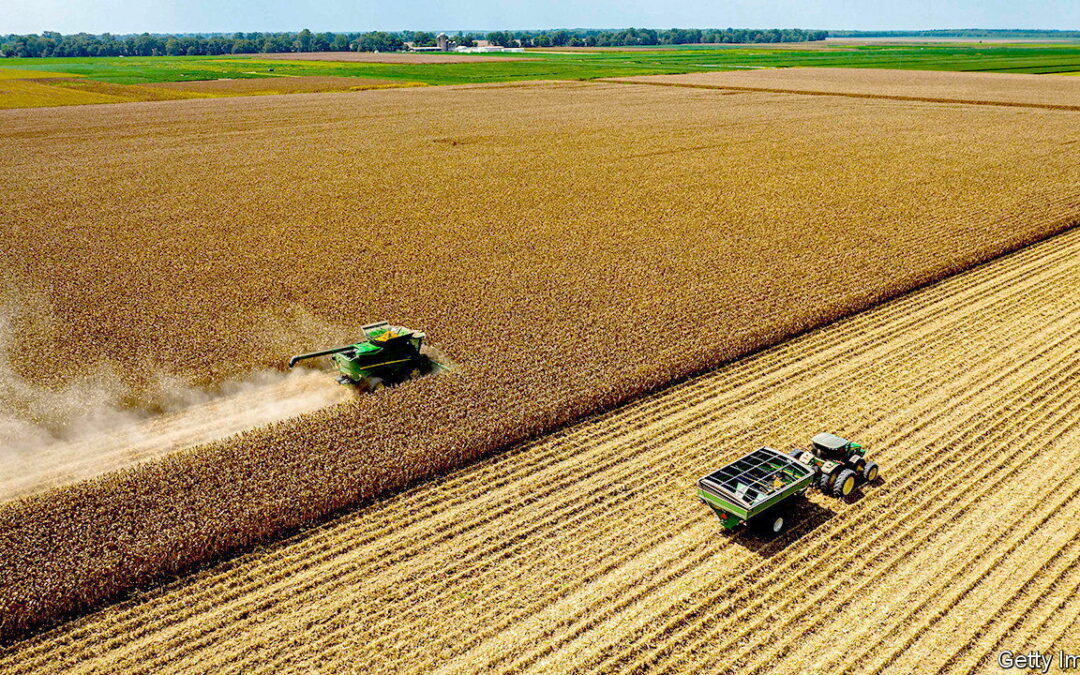THE FARM BILL may not sound like a piece of legislation most Americans should care about. The enormous spending package, which is due for reauthorisation on September 30th, includes funding for eradicating feral swine and marketing sheep. Yet by transforming the farming industry it has helped millions of Americans to afford food. Why is the farm bill so important, and what will happen if it is not, as seems almost certain, renewed on time?
Franklin Roosevelt passed the first farm bill in 1933, during the Great Depression. Farmers had been suffering for longer than most. During the first world war, as Europe’s demand for imports grew, America’s government had offered them loans to encourage them to increase production. But in the 1920s demand for American imports fell and prices plummeted. By the 1930s severe drought was exacerbating the strain. Many farmers went bankrupt. The Agricultural Adjustment Act paid landowners subsidies to cover losses on the sale of their crops and encouraged farmers to produce less. The bill is updated by Congress every five years: there have been 18 versions and the legislation has grown ever broader.
Today the bill’s biggest beneficiaries are not farmers, but America’s poor. Funding for nutrition programmes was added in 1973, and now eats up 76% of its spending. That share is expected to rise to 84% in the upcoming bill, according to forecasts by the Congressional Research Service, a government-research body. Most of this funding goes towards food stamps, which more than 41m Americans—12% of the population—use each month. Nutrition funding tends to be a sticking point when the bill is renewed. Republicans, who baulk at what they see as government largesse, often try to redirect its funding into other parts of the bill; such attempts have been met with fierce resistance from Democrats.
The next biggest chunk of spending goes towards crop insurance for landowners, which is paid out if certain crops are damaged or if prices fall. This benefits big farms and rich investors, who own swathes of land and can therefore grow more. (Bill Gates, for instance, owns around 270,000 acres of farmland across the country.) The Environmental Working Group, a nonprofit organisation, reckons that 27% of the $478bn paid out between 1995 and 2021 went to the top 1% of recipients.
Critics argue that payouts incentivise the overproduction of crops that are insured under the act, such as corn and soybeans. Rather than being turned directly into food, these are mostly used as animal feed or in the production of biofuels. That is not only bad for food security, but can encourage unsustainable practices to maximise acreage and yield. Some think the money would be better spent on conservation, which is also funded under the act.
This year’s farm bill is expected to cost $1.5trn over the next decade, which would make it the most expensive yet. With Congress squabbling over the federal budget, and the government careering towards a potential shutdown, agreement is unlikely before the September 30th deadline.
With luck, the food-assistance programmes, at least, will be extended through an appropriations act. But if the bill is not authorised by December 31st, another problem looms: its subsidies will revert back to “permanent” laws that are over eight decades old. Some crops insured by the current bill would cease to be covered. And rather than paying farmers to cover losses, the government would be compelled to buy crops to raise prices, which would hurt consumers. Dairy would be the first commodity to revert to permanent law: the price of milk would need to rise by 162% to reach the level set out in legislation, which is based on parity prices from the 1910s. Turning back the clock would be ludicrous and in no one’s interest. Debbie Stabenow, a Democrat and chair of the Senate Agriculture Committee, says she is hopeful that the bill will pass by the end of the year. For now, sit tight. ■









